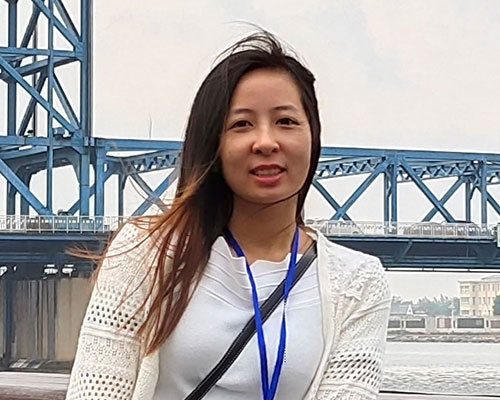language
English
العربية
বাংলাদেশ
Български
Hrvatski
Česky
Dansk
Nederland
 Esperanto
Esperanto
Slovenski
Filipino
Suomi
Français
Maori
 Shqiptare
Shqiptare
Georgian
 Euskara
Euskara
Deutsch
Ελλάδα
ישראל
इंडिया
Magyarország
Ísland
Indonesia
Irlanda
Italia
日本語
Sovensko
Հայաստան
한국
Kyrgyz
ປະເທດລາວ
 Zulu
Zulu
Latvian
Lithuanian
Luxembourgish
 Latinus
Latinus
Macedonian
Малайская
Maltese
Монгол улс
 Cymraeg
Cymraeg
ဗမာ
 தமிழ்
தமிழ்
नेपाल
Norge
ایران
Polska
Portugal
România
Российская
Србија
 Slovak
Slovak
Србија
 Slovak
Slovak
Bosanski
Slovenian
Беларус
España
Sverige
Точик
ประเทศไทย
Türk
Azərbaycan
Uzbek
 Afrikaans
Afrikaans
Việt Nam
Enhancing Efficiency with Vertical Transfer Tables in Glass and Ceramic Processing
Time:
2025-04-03
In the manufacturing and processing of glass and ceramics, efficiency and precision are paramount. One key component that plays an essential role in achieving these goals is the vertical transfer table. These tables serve as critical equipment for transporting materials vertically, optimizing workflow, and ensuring seamless transitions between various stages of the production process.
Vertical transfer tables are designed to move products or materials between different elevations smoothly. This capability is particularly advantageous in glass and ceramic processing, where intricate handling and precise positioning are required. By utilizing these tables, manufacturers can reduce the risk of damage to fragile materials, which is crucial in maintaining quality standards.
One of the most significant benefits of implementing vertical transfer tables is the enhancement of workflow efficiency. As production lines often involve multiple stages, having a dedicated system for vertical transfer allows for continuous operation without unnecessary delays. This efficiency not only speeds up production but also minimizes labor costs, as manual handling is reduced significantly. Workers can focus on more critical tasks, thereby enhancing overall productivity.
Moreover, the versatility of vertical transfer tables cannot be overstated. They can be customized to accommodate various sizes and weights of materials, making them suitable for a wide range of operations within the glass and ceramic processing industry. Whether you are dealing with large sheets of glass or delicate ceramic components, these tables can be adjusted to meet specific operational requirements.
Safety is another crucial aspect where vertical transfer tables shine. With automated systems, the risk of workplace accidents is significantly lowered. Operators are less exposed to the hazards associated with manual lifting and transporting of heavy or awkwardly shaped materials. Additionally, many modern vertical transfer tables come equipped with safety features such as sensors and emergency stops to further enhance workplace safety.
In terms of maintenance, vertical transfer tables are generally designed for longevity and reliability. Regular upkeep is essential, but advancements in technology have made these systems more durable and easier to service. This reliability not only contributes to operational efficiency but also ensures minimal downtime, allowing manufacturers to maintain consistent output.
To sum up, vertical transfer tables are an indispensable asset in the glass and ceramic manufacturing industry. Their ability to enhance workflow efficiency, ensure safety, and provide versatility makes them a valuable investment for any processing operation. By integrating these systems into your production line, you can improve productivity, reduce labor costs, and maintain high-quality standards in your products.
Vertical transfer tables are designed to move products or materials between different elevations smoothly. This capability is particularly advantageous in glass and ceramic processing, where intricate handling and precise positioning are required. By utilizing these tables, manufacturers can reduce the risk of damage to fragile materials, which is crucial in maintaining quality standards.
One of the most significant benefits of implementing vertical transfer tables is the enhancement of workflow efficiency. As production lines often involve multiple stages, having a dedicated system for vertical transfer allows for continuous operation without unnecessary delays. This efficiency not only speeds up production but also minimizes labor costs, as manual handling is reduced significantly. Workers can focus on more critical tasks, thereby enhancing overall productivity.
Moreover, the versatility of vertical transfer tables cannot be overstated. They can be customized to accommodate various sizes and weights of materials, making them suitable for a wide range of operations within the glass and ceramic processing industry. Whether you are dealing with large sheets of glass or delicate ceramic components, these tables can be adjusted to meet specific operational requirements.
Safety is another crucial aspect where vertical transfer tables shine. With automated systems, the risk of workplace accidents is significantly lowered. Operators are less exposed to the hazards associated with manual lifting and transporting of heavy or awkwardly shaped materials. Additionally, many modern vertical transfer tables come equipped with safety features such as sensors and emergency stops to further enhance workplace safety.
In terms of maintenance, vertical transfer tables are generally designed for longevity and reliability. Regular upkeep is essential, but advancements in technology have made these systems more durable and easier to service. This reliability not only contributes to operational efficiency but also ensures minimal downtime, allowing manufacturers to maintain consistent output.
To sum up, vertical transfer tables are an indispensable asset in the glass and ceramic manufacturing industry. Their ability to enhance workflow efficiency, ensure safety, and provide versatility makes them a valuable investment for any processing operation. By integrating these systems into your production line, you can improve productivity, reduce labor costs, and maintain high-quality standards in your products.
Contact Us
Add: No.28 SanFang Road, Lunjiao, Shunde, Foshan, Guangdong, China.
E-mail:info@zhengyi.cc
Chinese:www.zhengyi.cc
English:www.glassmachinery.com
Tel:+86-757-27889799
Manager Rachel Wu:+86 13326780588
(WeChat / WhatsApp)
Rachel Wu

Copyright © 2023 Foshan Shunde Zhengyi Glass Machinery Co.,Ltd.




